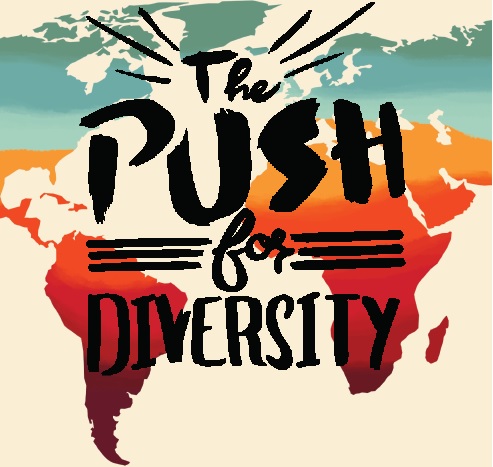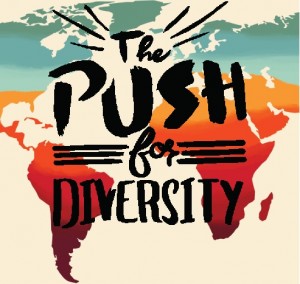Rollins prides itself on its sense of community and great liberal arts education. It seems that the recent push for diversity stems, in part, from Rollins’ new president. The campus is now home to a wealth of movements for inclusion.
“Diversity and inclusion have always been ingrained into the ethos of Rollins in various respects, but I believe that we’ll see it rise even more to the forefront within the next few years,” said Abby Hollern, Director of the Center for Inclusion and Campus Involvement.
The Center for Inclusion and Campus Involvement has many initiatives to promote campus diversity. These include culture and heritage celebrations, diversity and inclusion initiatives, both of which will be planned with student organization leaders.
This month, Rollins celebrated MLK week and will carry out several events for Black History Month, including groups for women of color, Black Student Union Meetings, and events at the Winter Park Library.
But what do the students think?
Rollins is a relatively inclusive community, according to Bernard Farquharson ’16.
“Though it has a long way to go before it represents the diverse population of the U.S., I think the campus climate towards diversity is positive,” he said.
“I doubt there are many here who adamantly oppose a diverse population. Even though I fall in a very small minority here, I’ve never felt excluded because of it. I think we could do better on speaking out and standing up for our minority groups no matter how small they are. I worry when peaceful protests for the black lives matter movement are met with sneers and apathy, when a group of predominantly black high school students visits campus and someone Yik Yaks, ‘What’s with the hood visiting Rollins?’ and received positive comments and votes. I don’t know if our problem is so much diversity as it is apathy,” said Farquharson.
Ashley Williams ’18, the President of the Black Student Union, noted a change in the campus climate since her freshman year at Rollins.
“From when I first got here to now, I feel like [there has been a] big improvement,” Williams said. “When I first got here, one of the main issues was their sense of diversity [with] international students versus their diversity in domestic students, but seeing the change this year I see that they’re trying, but we still have a lot of work to do.”
Many attribute the improvement in diversity and inclusion to President Grant Cornwell. His efforts to increase campus diversity have not gone unnoticed by students or faculty. Hania Powell ’18, Vice President of Rollins’ LGBTQ+ organization, Spectrum, and a board member of Voices For Women, applauded President Cornwell’s plans for increasing diversity and promoting inclusivity on campus.
“President Cornwell and his wife, Peg Cornwell, seem to be really enthusiastic about making changes on campus and working toward creating a more diverse student body, with more attention given to the growth and increased opportunities of diversity-centered student organizations like the Black Student Union and Spectrum,” she said. “I’m excited to see how they’ll improve the campus and hopefully enact significant change.”
Hollern also credited President Cornwell’s presence with creating positive change in the campus climate.
“[Diversity] was a major focus of the search criteria in our recent presidential search and we were grateful to find President Cornwell,” Hollern stated. “Even in his short time on campus, President Cornwell has moved the needle in this area. As the campus engages in the upcoming strategic plan under his leadership, I feel confident that this will be a guiding principle.”
President Cornwell’s emphasis on the importance of diversity to the Rollins community stems from the nature of a liberal arts education.
“Diversity is simply central to a liberal education tuned to prepare students for global citizenship and responsible leadership,” Cornwell stated. “Diversity is essential to our mission. There is only one way to liberally educate students for global citizenship and responsible leadership and that is within the context of a learning community; wherein students learn to listen across difference, to collaborate in the creation of new knowledge and deeper insight with students, faculty and staff who come to this project with a diverse array of identities and life experiences. We cannot be an excellent liberal arts college without being a diverse liberal arts college.”
Powell also commented upon this diverse learning and the tie to the liberal arts.
“That type of diverse learning environment should be fully considered a critical part of a liberal arts education,” Powell stated. “No student should leave a liberal arts college without a basic understanding of privilege and oppression. No student should leave feeling comfortable or satisfied with the fact that this campus is 70% white. Yes, everyone should go out of their way to educate themselves on social issues and dynamics of inequality, but if any student leaves this campus without understanding that these issues affect every single one of us, Rollins, as a liberal arts institution, has failed.”
Increasing diversity starts with incoming students. Getting new, diverse students to a liberal arts school such as Rollins, Williams points out, will be key to increasing diversity on our campus. According to Rollins website, the school has students from more than 40 states and 50 countries. Also, more than 30 percent of students are international or of color.
“I think, moving forward, we need to start thinking outside the box,” she said. “We need to stop sticking to traditional ways that we have here at Rollins. Let’s start going to these areas where we think that students may not be interested in this school. It’s not that they may not be interested, it’s that they may not ever know about Rollins and the liberal arts.”








Be First to Comment